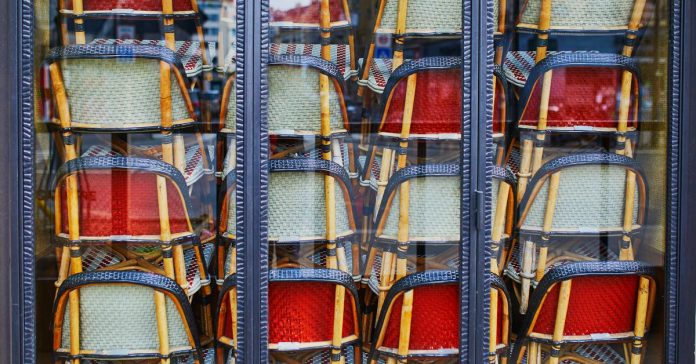Throughout the pandemic, restaurants have struggled to access federal government funding. When the US bailout stimulus bill, signed in March 2021, included a $ 28.6 billion restaurant revitalization fund, it was seen as a lifeline. Unlike the much-maligned Paycheck Protection Program loans, this money should be distributed as grants rather than loans, and would not have to be repaid by restaurant owners if used until March 2023. Though it sounded like a promising program to desperate restaurateurs, the program came to a shuddering halt on June 30 when funds ran out, leaving a trail of desperate, confused, and angry restaurant owners unsure of what to do next comes.
According to the Los Angeles Times, the Small Business Administration, which is responsible for overseeing the program, had received more than a quarter of a million applications by early May, representing a need of $ 65 billion in financial aid. That was already more than double the fund’s total, and by the time it closed, more than 370,000 business owners had applied for grants totaling more than $ 75 billion, according to the New York Times. Only about 105,000 businesses were approved for grants, averaging just over $ 272,000 per restaurant.
Although the restaurant industry has been hit harder than perhaps any other – with customers being told not to eat out and restaurant workers at high risk of contracting COVID-19 in the confines of kitchens and dining rooms Food workers and restaurant owners did not prioritize federal rescue operations or industry-specific aid programs.
The Paycheck Protection Program loans, introduced last year to help restaurants meet staff costs, left a lot to be desired. In order for these loans to be granted, much of the money had to be used to keep staff on payroll, though it was almost impossible to keep full staff due to limited capacity and indoor dining restrictions. And before many small restaurant owners could even get their hands on a loan, huge restaurant chains raised the fund.
Unlike the PPP program, which left loopholes for large chains to apply for huge loans (franchise locations can still apply for these grants), the Restaurant Revitalization Fund aimed to raise businesses owned by women, veterans, and people from economically and reach socially disadvantaged groups. many of them missed previous rounds of financial relief. The Small Business Administration prioritized applications from these companies in the first three weeks of the fund’s existence.
In theory, this was a great way to support companies that had been overlooked in previous funding rounds. Only a few white business owners complained that prioritizing these specific communities was discriminatory. Complaints were filed by white business owners in Tennessee, Texas and Pennsylvania, and in late May the Times reported that the Small Business Administration suspended payments on the originally prioritized claims. Thousands of marginalized business owners who thought they would be prioritized have their approvals revoked. These business owners were told that their applications would be approved “once” [the SBA] completes the processing of all previously submitted applications without priority and only if the [Restaurant Revitalization Fund] is not exhausted first, ”according to the Times. The lawsuits, backed by conservative groups in all three states (including one filed by former Trump administration officials like Stephen Miller), resulted in white-owned restaurants receiving grants. Conservative groups have fought hard to ensure that COVID remedies are not distributed and prioritized based on race and gender.
In this case, thousands of restaurateurs from marginalized and downtrodden communities who invested and hired staff were tottered thinking that they would soon have money in their accounts. For companies fortunate enough to receive this final round of SBA funding, the grants can equal the amount of revenue a restaurant lost during the pandemic, up to $ 10 million per company and US $ 5 million – Limited dollars per location. In response to frustration at the very limited and restrictive ways in which PPP money could be spent, restaurant owners have been given more autonomy to decide where to direct those funds to keep their businesses open and keep their employees busy.
When the program was first proposed by Rep. Earl Blumenauer of Oregon last year, he was hoping the fund would distribute $ 120 billion in grants. Blumenauer suspected from the start that the fund would be hugely popular and that his colleagues might have to approve more funding once they saw how big the demand was relative to the drastically scaled-down fund that went through Congress. If the revitalization fund were even part of the additional $ 90 billion or more originally proposed, it would still have the resources to help many more restaurants.
Blumenauer published a statement on July 1st stating: “Hundreds of thousands of local restaurants still urgently need help to keep their doors open.” The agent says he has passed a bill to “add $ 60 billion to the restaurant revitalization fund, enough to cover any outstanding applicants. We’ve won 175+ bipartisan co-sponsors in two weeks, but time is running out. We have to act now, before it’s too late. ”If the revitalization fund does indeed revive, it is unclear whether it will give priority to the many marginalized and overlooked business owners it was originally trying to help (and who still need funding) or a power of lawsuits has permanently changed the fund.
Updated July 2, 2021 at 1:15 p.m.











